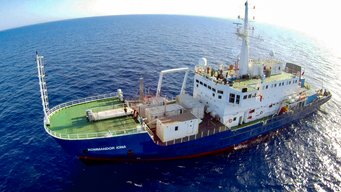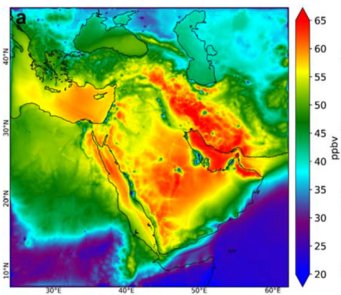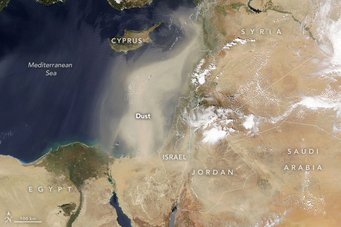Anthropogenic air pollution more significant than desert dust
In the Middle East, more than 90 percent of the fine aerosol particles that are detrimental to health and the climate originate from human-made sources
At the beginning of the year, the World Health Organisation (WHO) announced that the Middle East ranks among the regions with the worst air quality. There is a common misconception that desert dust is the most significant cause of air pollution from particulate matter in this region, but a new study has shown that more than 90 percent of the particulate matter that is detrimental to health originates from anthropogenic sources. This human-made fine particulate matter differs from the less harmful desert dust particles. Scientists determined this through ship born measurements and verified it in elaborate modeling calculations. The anthropogenic particles are primarily caused by the production and use of fossil fuels such as oil and gas. They are generally smaller than desert dust and can penetrate deep into the lungs.
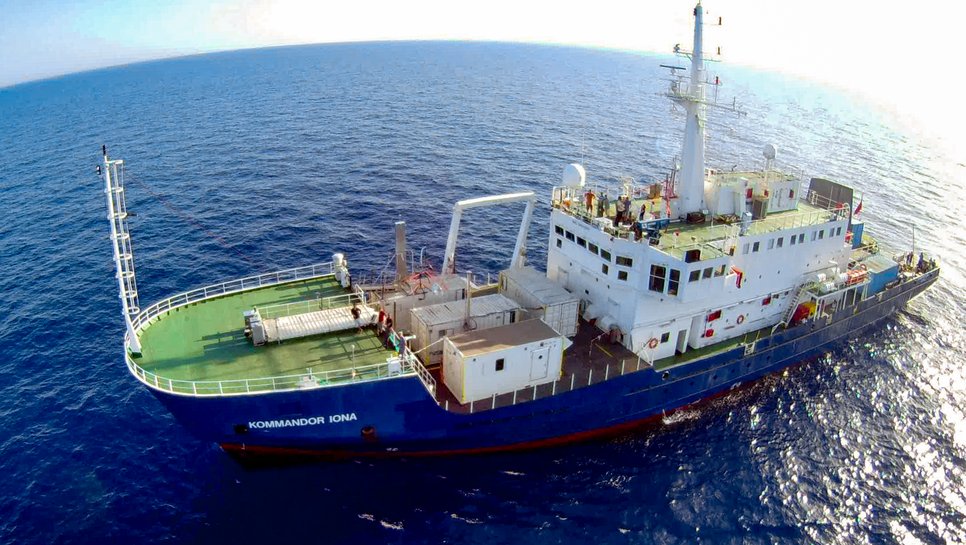
In 2017, an international team headed by the Max Planck Institute for Chemistry travelled around the Arabian Peninsula on a research vessel in a spectacular expedition. Various measuring instruments were kept on board to sample aerosol particles and trace gases such as ozone and nitric oxides. The researchers also discovered that the Suez Canal, the northern Red Sea and especially the Arabian Gulf are regional hotspots for ozone; the exceptionally strong concentration of ozone in these areas indicates that the harmful gas is also a problem in other densely populated regions of the Arabian Peninsula. Furthermore, the scientists found that concentrations of nitrogen oxides were significantly higher than the WHO guidelines.
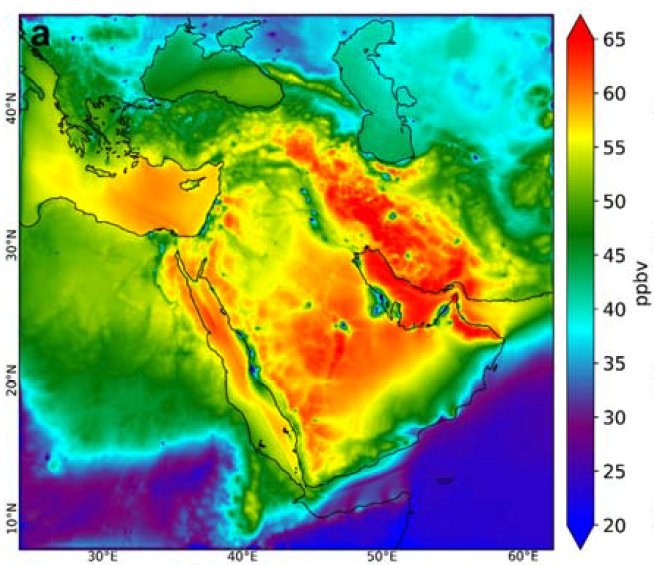
"There are relatively few measurements from the region around the Arabian Peninsula and in the Middle East in general. That is why this research campaign is so important," says Sergey Osipov, an atmospheric physicist at the Max Planck Institute for Chemistry in Mainz and the King Abdullah University of Science and Technology (KAUST) in Saudi Arabia. “We used the data in atmospheric chemistry models in order to draw conclusions about general air quality and health consequences.”
Air pollution in the Middle East leads to high mortality rates
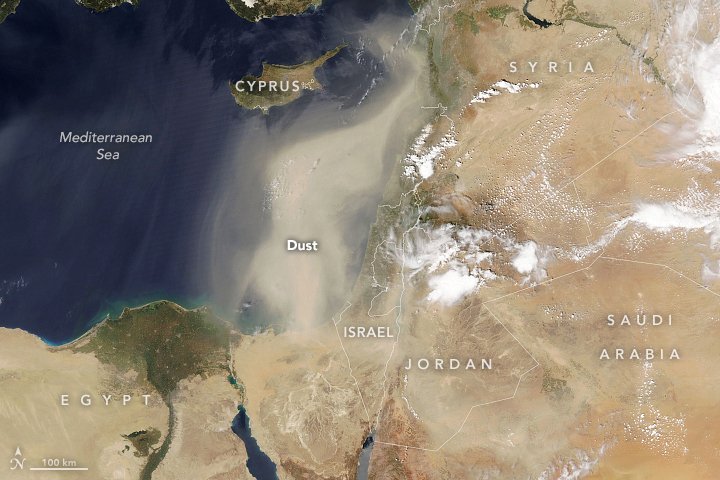
"The thresholds for particulate matter are constantly exceeded in the region, which is home to 400 million people," says Jos Lelieveld, director at the Max Planck Institute for Chemistry and project leader. “While the measurements have been performed several years ago, looking into the data more closely with new atmospheric modeling tools surprisingly showed that the health hazardous fraction of the pollution particles is almost exclusively human-made”. In addition to numerous researchers from Mainz, scientists from Kuwait, the Cyprus Institute, as well as from Saudi Arabia, France and the USA were also involved in the project. "The extreme air pollution results in an annual excess mortality rate of 745 people per 100,000. It has similar significance to other leading health risk factors, such as high cholesterol and tobacco smoking, and is also comparable to the mortality rate of COVID-19," adds the atmospheric scientist, who is also a professor at the Cyprus Institute in Nicosia. Given that anthropogenic air pollution is a key factor in climate change in the Middle East as well, measures to reduce emissions are all the more important, he said.
